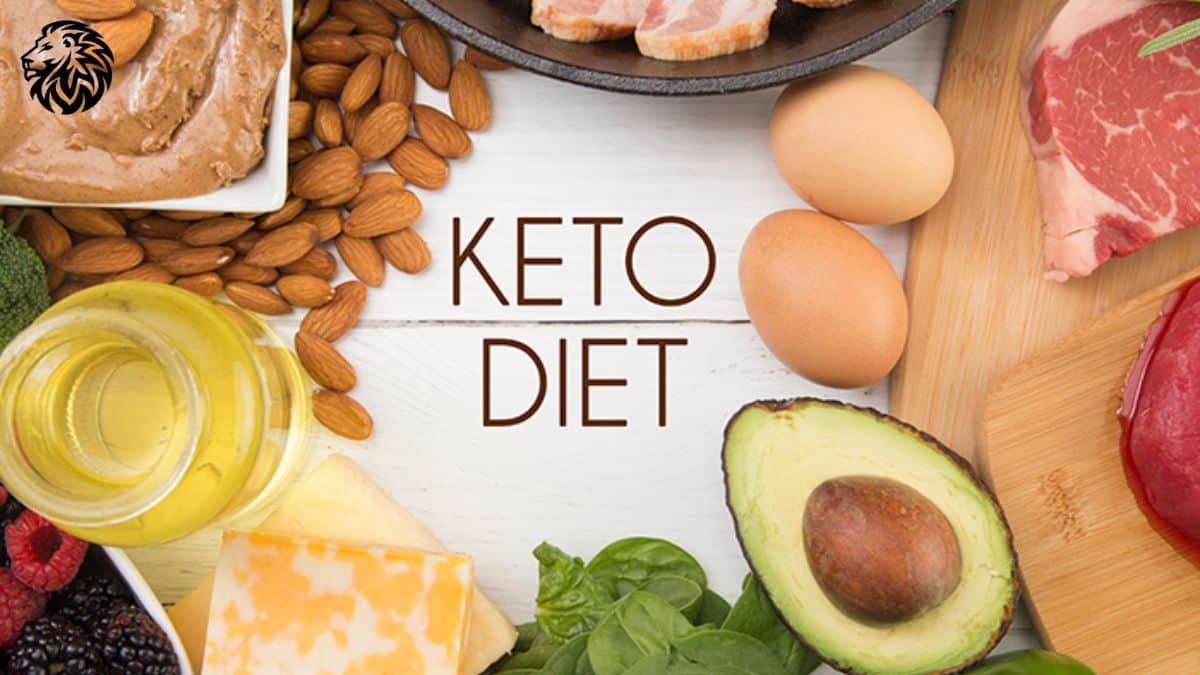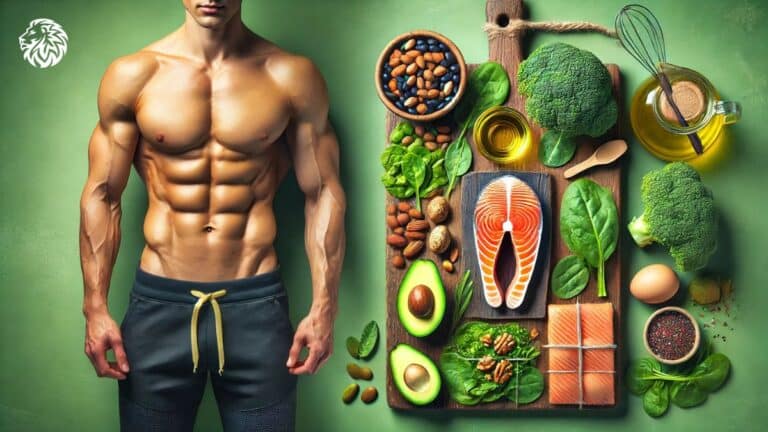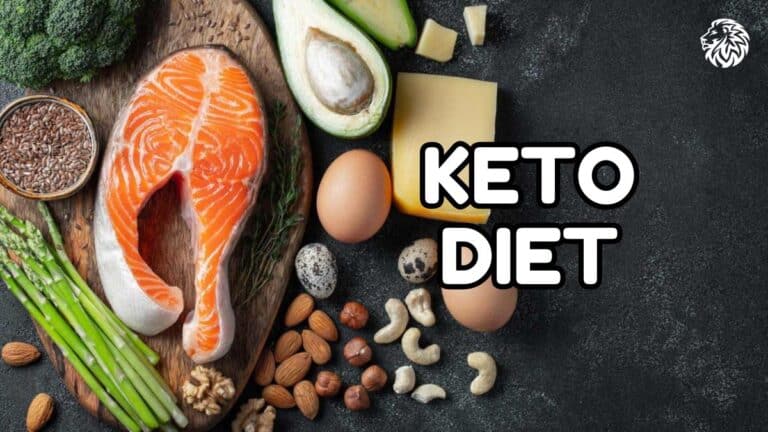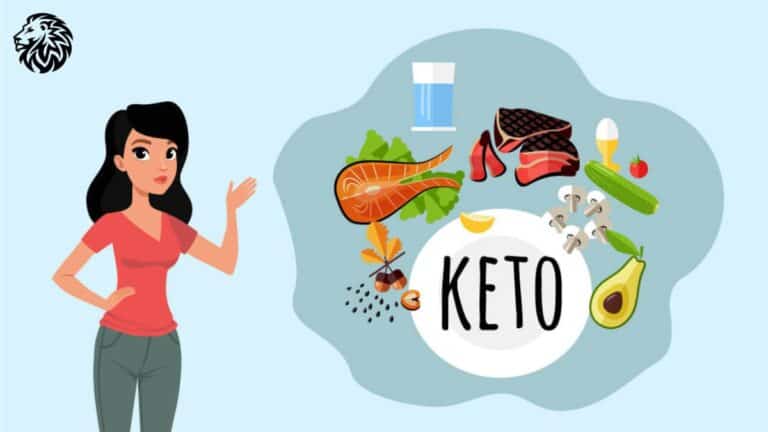The ketogenic diet has gained widespread popularity for its numerous health benefits, including weight loss, improved energy levels, and better mental clarity. But for beginners, it can seem a bit overwhelming. To help you get started, we’ll break down the basics of keto in a simple, easy-to-follow guide.
By the end of this post, you’ll understand what the ketogenic diet is, how it works, and why it’s such a powerful tool for improving your health. Whether you’re looking to lose weight, increase energy, or support brain health, this beginner-friendly keto guide will help you make the transition with confidence.
What Are Ketones?
Before diving into the specifics of the ketogenic diet, it’s important to understand what ketones are. Ketones are not carbohydrates, proteins, or fats, but they do share some characteristics with both fats and carbohydrates. Essentially, ketones are an alternative fuel source for the body, derived from fat. They offer a unique advantage by providing a clean, efficient energy source, especially for the brain and heart.
Your body produces ketones when you reduce carbohydrate intake or lower the frequency of meals. By consuming fewer carbs, you shift your body from burning glucose (sugar) to burning fat, a process known as ketosis. Ketones offer numerous benefits, including increased oxygen levels, improved energy, and enhanced brain function.
How to Get Into Ketosis
The key to entering ketosis is to reduce carbohydrate intake significantly. This usually means limiting carbs to around 20-50 grams per day. Another important factor is reducing the frequency of eating, which is where intermittent fasting comes into play. Intermittent fasting complements keto by helping you get into ketosis faster.
It typically takes about 3-5 days to enter ketosis, but this can vary depending on factors such as insulin resistance or pre-existing conditions like diabetes. The more insulin-resistant your body is, the longer it may take to fully adapt to using fat as fuel.
Once your body is in ketosis, it begins to burn stored fat for energy instead of glucose. This shift is why so many people find keto effective for weight loss and improving overall health.
Benefits of Ketosis
Ketosis offers a wide range of benefits beyond just weight loss. Here are some of the key advantages of this metabolic state:
- Improved Brain Health: The brain prefers ketones as an energy source over glucose. If the brain or heart experiences damage, ketones can bypass mechanical issues and directly nourish these tissues.
- Reduced Insulin Levels: High insulin levels are often behind many metabolic issues such as pre-diabetes, type 2 diabetes, and metabolic syndrome. Ketosis lowers insulin levels, helping you address these health problems at their root.
- Fat Loss and Improved Body Composition: Ketosis helps target and reduce stubborn fat, particularly in the belly area. It also reduces fat stored in the liver, which improves liver function and overall health.
- Increased Energy and Mental Clarity: Many people report feeling more energized and focused once they enter ketosis. This is because ketones provide a more stable energy source than glucose, avoiding the spikes and crashes that come with carbohydrate-based diets.
- Hunger Control: One of the most significant benefits of ketosis is the reduction in hunger. Once you’re in ketosis, you feel full and satisfied for longer periods, making it easier to stick with the diet long-term.
How the Keto Diet Promotes Weight Loss
The keto diet has been associated with several mechanisms that may promote weight loss. These include calorie restriction, appetite control, and improved metabolic health.
1. Calorie Restriction
One of the most straightforward reasons people lose weight on the keto diet is calorie restriction. By cutting out entire food groups, such as grains, fruits, and starchy vegetables, people on the keto diet often end up consuming fewer calories overall. Additionally, high-fat foods are typically more satiating, meaning people feel full faster and for longer periods. This reduction in hunger can make it easier to stick to a lower calorie intake, ultimately leading to weight loss.
2. Fat-Burning Through Ketosis
When the body enters ketosis, it becomes efficient at burning fat for energy, both from dietary fat and stored fat in the body. This is one of the main reasons why the keto diet is associated with rapid weight loss, especially in the initial stages. Many people report losing several pounds in the first week or two of starting the keto diet, primarily due to water loss. This occurs because glycogen (the stored form of carbohydrates in the body) binds to water. When glycogen stores are depleted, water is lost as well, leading to a noticeable drop in weight.
3. Appetite Suppression
The keto diet may help regulate appetite by influencing hunger hormones like ghrelin. When the body relies on fat and ketones for energy, hunger levels tend to decrease. This can make it easier for people to stick to the diet without feeling the need to snack or overeat. Additionally, the combination of high-fat and moderate-protein foods can leave individuals feeling more satisfied, further reducing the likelihood of excessive calorie consumption.
The Power of Intermittent Fasting
Intermittent fasting (IF) is a highly effective way to boost the benefits of the ketogenic diet. By extending the periods between meals, you give your body more time to burn fat and produce ketones.
The recommended fasting window for keto beginners is typically 18 hours of fasting with a 6-hour eating window. This means you would skip breakfast and only eat two meals per day, usually lunch and dinner.
The main reason intermittent fasting works so well with keto is that it keeps insulin levels low, which is essential for fat burning. The less frequently you eat, the less insulin your body produces, allowing it to tap into fat stores for energy.
Autophagy: The Body’s Natural Clean-Up Process
One of the fascinating benefits of intermittent fasting is something called autophagy. Autophagy is your body’s way of cleaning out damaged cells and regenerating new, healthy ones. During fasting periods, your body breaks down old or damaged proteins and recycles them into new amino acids, which helps reduce inflammation and improve overall health.
Autophagy typically kicks in around the 18-hour fasting mark, making intermittent fasting a key component for those looking to optimize the benefits of keto. Not only will this process help with fat loss, but it also supports tissue repair and regeneration, making it great for long-term health.
Healthy Keto vs. Dirty Keto
Not all keto diets are created equal. There’s a big difference between healthy keto and what’s commonly referred to as “dirty keto.”
- Healthy Keto: This version focuses on nutrient-dense, high-quality foods. It includes grass-fed meats, wild-caught fish, organic vegetables, and healthy fats like avocados and olive oil. The goal of healthy keto is to maximize the nutritional value of every meal.
- Dirty Keto: Dirty keto, on the other hand, is simply about keeping carbs low, without paying attention to food quality. Processed meats, unhealthy oils, and minimal vegetables often characterize this approach. While you may still lose weight on dirty keto, the long-term health benefits won’t be nearly as profound.
Choosing healthy keto over dirty keto not only improves weight loss results but also leads to better skin, energy levels, and overall health.
Meal Structure on the Ketogenic Diet
When following a ketogenic diet, the structure of your meals plays a significant role in maintaining ketosis and avoiding hunger. Here’s a simple way to think about your plate:
- 50% vegetables: Focus on leafy greens and low-carb vegetables, which provide essential vitamins, minerals, and fiber.
- 25% protein: This can come from sources like grass-fed beef, pasture-raised chicken, or wild-caught fish. Protein helps maintain muscle mass and supports overall health.
- 25% healthy fats: Include fats like avocados, olive oil, coconut oil, and butter. These fats not only help you stay full but also provide the primary energy source for your body in ketosis.
As a general rule, don’t eat unless you’re actually hungry. If you’re following the ketogenic diet correctly, you’ll naturally feel less hungry over time. Make sure to include enough healthy fats to help you avoid snacking between meals.
Foods to Include and Avoid on Keto
Here are some keto-friendly foods that should be part of your diet:
- Pasture-raised eggs: A great source of protein and healthy fats.
- Organic, grass-fed meats: These offer high-quality protein and essential fats.
- Fish and shellfish: Rich in omega-3 fatty acids, sardines and salmon are excellent choices.
- Avocados: Packed with healthy fats and fiber.
- Olives: A must-have on any keto plan, providing healthy fats and a good source of minerals.
- Leafy greens and vegetables: Aim for 7-10 cups of vegetables per day to get essential nutrients and fiber.
While cheese is allowed on keto, it’s best to limit its intake. Cheese can cause issues for those with allergies or prostate concerns, so it’s important to choose high-quality, grass-fed options if you do include it.
Be cautious with nuts and seeds, especially if you’re prone to kidney stones. Almonds and spinach can contribute to kidney stone formation, so opt for other nuts like sunflower seeds instead.
Final Tips for Success
Getting started with the ketogenic diet can seem daunting, but it’s all about taking small steps and staying consistent. Focus on reducing your carbs, eating high-quality foods, and incorporating intermittent fasting to achieve your goals.
Start with two meals a day, skip breakfast, and aim for an 18-hour fasting window to maximize the benefits of ketosis and autophagy. Keep your meals simple by following the 50% vegetables, 25% protein, and 25% fat rule.
With time, your body will adapt to burning fat for fuel, and you’ll begin to feel the long-term benefits of this powerful way of eating.
Frequently Asked Questions About the Ketogenic Diet
What is the ketogenic diet?
The ketogenic diet is a low-carb, high-fat eating plan that shifts the body from burning glucose to burning fat for energy by producing ketones.
How does the ketogenic diet help with weight loss?
By reducing carbohydrate intake, the body enters ketosis, where it burns stored fat for energy, resulting in weight loss and reduced belly fat.
How long does it take to enter ketosis?
It usually takes 3-5 days to enter ketosis, but this can vary depending on insulin resistance and overall metabolic health.
Can I eat carbs on a ketogenic diet?
Carbs are significantly reduced on keto. Most people limit themselves to 20-50 grams of carbs per day, focusing on low-carb vegetables and berries.
What foods can I eat on the ketogenic diet?
You can eat foods like grass-fed meats, wild-caught fish, leafy greens, healthy fats (avocados, olive oil), and eggs. Avoid processed foods and high-carb items.
Is intermittent fasting necessary on the ketogenic diet?
Intermittent fasting is not required but can enhance the benefits of keto by promoting faster fat burning and increasing the production of ketones.
What is the difference between healthy keto and dirty keto?
Healthy keto emphasizes high-quality, nutrient-dense foods, while dirty keto focuses only on keeping carbs low, often relying on processed, low-quality foods.
Can I snack on keto?
It’s best to avoid snacking, as frequent eating can increase insulin levels. Focus on eating nutrient-dense meals that keep you full longer.
How many meals should I eat per day on keto?
Many keto followers eat two meals per day within a 6-hour window, allowing for an 18-hour fast to maximize ketosis and autophagy benefits.
Can I exercise on the ketogenic diet?
Yes, exercising on keto is beneficial. Your body will adapt to using fat for energy, which can improve endurance and fat loss.
Will I feel hungry on keto?
Once you are in ketosis, hunger tends to decrease, making it easier to follow the diet without constant cravings or overeating.
Are there any side effects of starting keto?
Some people experience “keto flu” during the first few days, with symptoms like fatigue, headache, and irritability as the body adapts to burning fat.
Can I eat dairy on keto?
Yes, but in moderation. Some people don’t tolerate dairy well, so it’s important to choose high-quality, grass-fed dairy and monitor your reaction.
Can I eat fruit on the ketogenic diet?
Most fruits are high in carbs, but small amounts of berries (like strawberries and blueberries) are allowed due to their lower carb content.
What supplements should I take on keto?
Common supplements for keto include electrolytes (sodium, magnesium, potassium), B vitamins, and healthy fats like omega-3s from fish oil.







